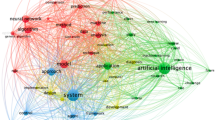Abstract
Deep Blue's defeat of World Chess Champion Garry Kasparov in 1997 marked one of the great accomplishments in artificial intelligence during the previous century. It was the result of work by thousands of researchers beginning in the late 1950s and of the great support given to the project by IBM during the final decade of the century. The achievement suggests great progress can be expected in other related AI problems in this current century.
Similar content being viewed by others
Explore related subjects
Discover the latest articles, news and stories from top researchers in related subjects.References
J.H. Condon and K. Thompson, BELLE chess hardware, in: Advances in Computer Chess, Vol. 3, ed. M.R.B. Clarke (Pergamon Press, Oxford, 1982) pp. 45-54.
M. Gardner, Those mindless machines, The Washington Post, May 25 (1997).
D. Gelernter, How hard is chess, Time Magazine, May 19 (1997).
M. Gerstein, How smart can it be, The New York Times, Letters to the Editor, May 13 (1997).
D. Goodman and R. Keene, Man Versus Machine, Kasparov Versus Deep Blue (H3 Publications, Cambridge, MA, 1997).
F.-H. Hsu, A two-million moves/s CMOS single chip chess move generator, IEEE Journal of Solid State Circuits 22(5) (1987) 841-846.
R.M. Hyatt, Parallel search on the Cray XMP/48, International Computer Chess Association Journal 8(2) (1985) 90-99.
G. Johnson, Conventional wisdom says machines cannot think, The New York Times, May 9 (1997).
M. Khodarkovsky and L. Shamkovich, A New Era: How Garry Kasparov Changed the World of Chess (Ballentine Books, New York, 1997).
D. King, Kasparov v Deeper Blue (Batsford, 1997).
R. Korf, Depth-first iterative deepening: an optimal admissible tree search, Artificial Intelligence 27 (1985) 97-109.
C. Krauthammer, Be afraid. The meaning of Deep Blue's victory, The Weekly Standard, May 26 (1997) 19-23.
B.C. Kuszmaul, The STAR TECH massively-parallel chess program, International Computer Chess Association Journal 18(1) (1995) 3-19.
D. McDermott, Yes, computers can think, The New York Times, May 13 (1997).
M. Newborn, A parallel search chess program, in: Proceedings of the 1985 ACM Annual Conference, 1985, pp. 272-277.
M. Newborn, Kasparov Versus Deep Blue: Computer Chess Comes of Age (Springer, New York, 1997).
A. Newell, J.C. Shaw and H. Simon, Chess playing programs and the problem of complexity, IBM Journal of Research and Development 4(2) (1958) 320-335. See also: Computer and Thought, eds. Feigenbaum and Feldman (McGraw-Hill, New York, 1967).
J. Schaeffer, Improved parallel alpha-beta search, in: Proceedings of the Fall Joint Computer Conference, 1986, pp. 519-527.
C.E. Shannon, Programming a computer for playing chess, Philosophical Magazine 41 (1950) 256-275.
D.J. Slate and L.R. Atkin, CHESS 4.5, The Northwestern University Chess Program, in: Chess Skill in Man and Machine, ed. P. Frey (Springer, New York, 1977) pp. 82-118.
M.E. Stickel and W.M. Tyson, An analysis of consecutively bounded depth-first search with applications in automated deduction, in: Proceedings of the Ninth International Joint Conference on Artificial Intelligence, Los Angeles, CA (1985) pp. 1073-1075.
G. Sutcliffe and C.B. Suttner, The results of the CADE-13 ATP system competition, Journal of Automated Reasoning 18 (1997) 271-286.
C.B. Suttner and G. Sutcliffe, The CADE-14 ATP system competition, Journal of Automated Reasoning 21(1) (1998) 99-134.
G. Sutcliffe and C.B. Suttner, The CADE-15 ATP system competition, Journal of Automated Reasoning 23(1) (1999) 1-23.
G. Sutcliffe and C.B. Suttner, The CADE-16 ATP system competition, http://www.cs.jcu.edu.au/~tptp/CASC-16/.
The brain's last stand, Newsweek, May 5 (1997).
K. Thompson, Retrograde analysis of certain endgames, International Computer Chess Journal 9(3) (1986) 131-139.
E. Thomson, Computer morale, The New York Times, Letters to the Editor, May 13 (1997).
Rights and permissions
About this article
Cite this article
Newborn, M. Deep Blue's contribution to AI. Annals of Mathematics and Artificial Intelligence 28, 27–30 (2000). https://doi.org/10.1023/A:1018939819265
Issue Date:
DOI: https://doi.org/10.1023/A:1018939819265




